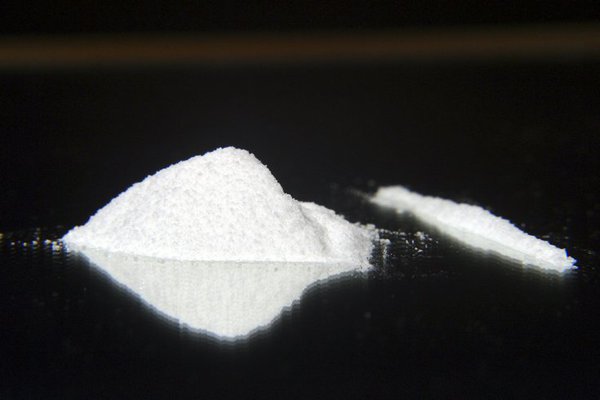The U.S. Food & Drug Administration is taking action to limit unlawful imports of xylazine, the animal tranquilizer that is increasingly being found in the nation's illegal fentanyl supply. The drug's mixture with fentanyl, known as tranq dope, is linked to the growing number overdose deaths and life-threatening side effects among people who use it.
On Tuesday, the FDA announced it will restrict importation of xylazine and the ingredients used to make the drug. The veterinary sedative has legitimate uses as a pain reliever and anesthetic in large animals, such as deer and horses, but has become a common contaminant found in drugs like fentanyl, methamphetamine and cocaine.
- MORE NEWS
- The food you eat impacts the health of your eyes
- Starbucks' new olive oil-infused coffee may carry health benefits
- How to prevent Shigella, a stomach bug that can resist antibiotics
Tranq dope is pervasive in the drug supply in Philadelphia. The city has been called "ground zero" for the sedative's wider entry into the nation's illicit drug market, particularly in hard-hit neighborhoods like Kensington.
The FDA's action will create an import alert for xylaxine and its ingredients when they are shipped from overseas to be manufactured for approved veterinary uses, officials said. The FDA may detain shipments that appear to be in violation of the law and will require importers to provide specific evidence that incoming products are properly labeled, not adulterated and are intended for legitimate veterinary uses.
"We recognize the public health effects of xylazine tainting these illicit drugs and are continuing to ensure that legitimate product is restricted to veterinary use only," said Tracey Forfa, director of the FDA's Center for Veterinary Medicine.
Heroin produces a longer-lasting high than fentanyl. But because fentanyl can be produced in a lab and it is at least 50 times more powerful than heroin, by volume, it is cheaper and easier for drug dealers to acquire. In Philadelphia, fentanyl has become the dominant opioid sold on the streets.
To extend fentanyl's high, it is being mixed with xylazine, but people who purchase fentanyl may be unaware they are buying tranq dope.
Xylazine was first detected in drugs in Puerto Rico during the early 2000s, and here, the Philadelphia Health Department first first found the tranquilizer in the city's drug supply in 2006. Its has become rapidly prevalent during the past decade with the proliferation of fentanyl, which is linked to an increase in fatal drug overdoses nationwide.
Fentanyl was responsible for 71% of the city's 1,276 fatal drug overdoses in 2021, the deadliest year on record, according to health department data. In more than 44% of those fentanyl overdose deaths that year, xylazine also was detected, and xylazine was found in 90% of the dope samples Philadelphia tested in 2021.
Because xylazine depresses breathing, blood pressure, heart rate and body temperature, it often leads to additional complications during a fentanyl overdose. Xylazine can mask the effects of the overdose reversal drug Narcan, making it difficult for first responders to tell whether an initial dose of the drug has worked. This can delay attempts to address urgent breathing difficulties caused by xylazine. The drug may keep a person sedated even after the effects of fentanyl have been reversed, costing first responders valuable time in their efforts to save lives.
People who use drugs mixed with xylazine also are known to suffer from painful skin wounds that put them at risk of serious infections. The medical explanation for xylazine wounds still isn't understood well, since the lesions don't appear in animals who are given the medication. These wounds differ from infections that can result from repeated drug injections, and they often surface on parts of the body other than where drugs are injected
"Xylazine wounds can occur no matter how the drug is taken — whether it's smoked, snorted or injected," Jennifer Shinefeld, a field epidemiologist for the Philadelphia health department, said last fall.
People who use xylazine can become dependent on it, much like people can form addictions to benzodiazepines. This addiction to xylazine can be in addition to the opioid addiction a fentanyl user has.
In response to the increasing presence of tranq dope in Philadelphia, the health department has changed its overdose-response protocols and is working with local organizations that provide treatment for xylazine wounds.
Health department officials believe much of the xylazine supply in the city is diverted from veterinary sources, and it's unclear how much of the tranquilizer arrives in the U.S. from overseas. Black-market xylazine tends to be more pure than veterinary sources.
The FDA's move to restrict xylazine imports is an attempt to address the tranquilizer's infiltration of the U.S. drug market.
"We will continue to use all tools at our disposal and partner with the Drug Enforcement Administration and other federal, state, local agencies and stakeholders as appropriate to stem these illicit activities and protect public health," FDA Commissioner Robert M. Califf said.


